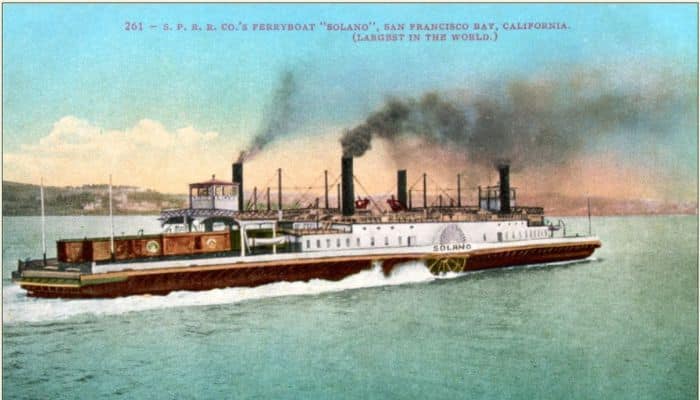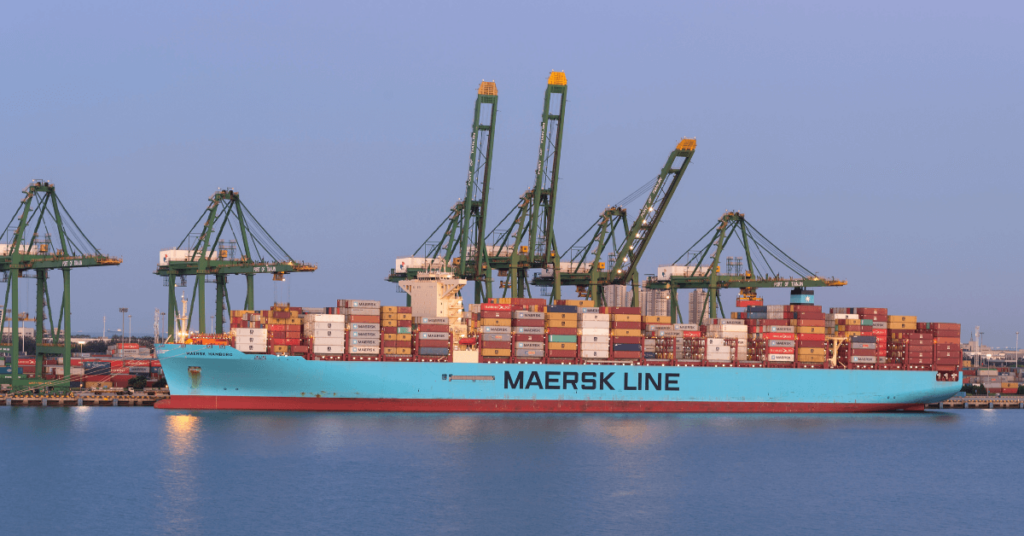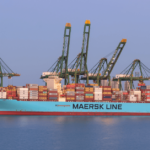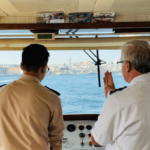15 Biggest Wooden Ships Ever Built
In the ever-changing realm of the maritime world, where steel behemoths dominate the world’s oceans and seas, there were once wooden giants crafted with intricate artistry. The colossal wooden vessels of the bygone era were engineering marvels that ruled the world.
They carried world trade by transporting valuable and often precious materials to and from the different continents, interlinking them through trade and traditions.
In this article, we will uncover some of the biggest wooden ships in the world that once took civilisations to victory in wars, facilitated cultural exchanges and led to significant discoveries that changed the geopolitical landscape of the time once and for all. As they say, each ship has its own story etched in its planks.
1. Wyoming
First on the list of the biggest wooden ships is Wyoming, a 6-masted schooner that once sailed the perilous waters of the American coast.
Wyoming was 450 ft or 140 m long, the largest wooden ship ever built. It was completed in 1909 by the firm of Percy & Small in Bath, Maine. She was named after the State of Wyoming, whose Governor Bryant Butler Brooks was one of its chief investors.

The ship cost a whopping $175,000 dollars at that time and could carry 6600 tonnes of coal.
Its sheer size and wooden body made it flex in heavy seas. Her designers stiffened her with internal steel bracing. However, she bent and twisted at sea. Gaps formed in her planking, and water gushed inside its hold. However, the pumps handled the leakage.
Wyoming had a steam engine, but it did not power the ship; rather, it was used for auxiliary tasks like reefing sails, hauling lines and pumping out water. She functioned with an 11-member crew and remained in service for 15 long years.
She met a terrible fate in March 1924 while sailing from Norfolk to New Brunswick. A storm engulfed it when she arrived at Pollock Rip, a waterway through the 10-mile stretch of water separating Nantucket from Cape Cod.
The massive wooden ship could not deal with the rogue waves that lashed against it and the strong winds that made her planks creak. Ultimately she sank, taking down 13 sailors with her.
2. Solano
A massive railroad ferry constructed in California as a reinforced paddle steamer, Solano was a record-breaker.
She was the biggest ferry of her kind when she was launched in 1879 in Oakland. She claimed the title of being the largest ferry for 35 years until her sister ship, the Contra Costa, entered service in 1914.

Solano was 425 ft long and 116 ft wide and could easily carry a 24-car passenger train and locomotive or a 48-car freight train and locomotive.
She was built to transport trains on the Central Transcontinental line to and from San Fransisco Bay Area.
She was endowed with sidewheels by the Central Pacific Railroad, which carried trains to and from the Carquinez Strait every day for 51 years from 1879 to 1930.
Arthur Brown designed Solano like a rail bridge. Two 2000 horsepower steam engines powered the ingenious vessel with two pilot rooms, eliminating the need for the vessel to turn around for return voyages. Her life ended when she was dismantled and sold for scrap.
3. Bretagne
Bretagne was a 3-deck ship of the French Navy, designed by Jules Marielle as an improved version of the Courbet Class with a much more powerful armament. However, the small size of French drydocks meant the turrets were closer to the ends of these ships, negatively impacting their seakeeping capabilities.
It was ordered on 1st May 1912 and entered service in Feb 1916 after the first world war commenced. She was named in honour of the Brittany province.

Bretagne had a 25-year-long career (1855-1879) which she spent with the Mediterranean Squadron and took part in important naval operations during the first world war.
The 393 ft long ship was, however, not a successful design. Although it underwent modernisation during the interwar period, it could not match the performance of Napolean’s class 2 deckers and became obsolete after the ironclad was introduced.
She was generally involved in training manoeuvres in the Atlantic and Mediterranean and escorted troop convoys when World War II began in 1939.
Germany invaded France in 1940, and the latter surrendered six weeks later. At this time, the battleship was in Mers-el-Kebir, French Algeria. The British feared that the Germans would attack the ships there, so they attacked the ships after France refused to demilitarise their fleet.
Bretagne was hit four times and eventually exploded, killing most of her crew. Her wreck was salvaged in 1952 and then broken and sold for scrap.
4. Dunderberg
Dunderberg, a Swedish word meaning thundering mountain, was a casemate ironclad of 14 guns. It was constructed for the Union Navy, which rejected her once it was completed.
Ultimately it ended up with France, though Prussia tried its best to acquire it for its navy. Under the French, it served as Rochambeau. And though it was acquired to participate in war and was preparing for the Franco-Prussian War, she never engaged in any combat. The 377 ft ship was decommissioned after the end of the war and scraped in 1874.

Her construction began in 1862 and was slower due to a shortage of manpower, material and money. Unseasoned oak had to be used for her body since seasoned timber was scarce; most of it was already exhausted earlier in the war. This shortened her lifespan; however, her hull was strong, with the space between her frames covered with timber.
She was launched after American Civil War ended in 1865 and remained in service from 1865-1874.
5. Caligula’s Giant Ship
Also referred to as the Round Ship, Caligula’s Giant Ship was a barge 6 decks high. Its ruins were discovered when Rome’s Leonardo da Vinci International Airport was being built in Fiumicino, Italy, in the 1950s.
This place was earlier a Romanport, a few km north of Ostia at the mouth of the Tiber River.

It was one of the biggest archaeological discoveries which sparked debates about what the ship was used for. It was elaborate with intricate wooden carvings and seemed as if no expense was spared in constructing it.
This massive Roman barge was 341 ft long and had a 69 ft beam. It was capable of carrying 1300 tonnes of cargo, 700 to 800 crew members and displaced 7400 tonnes.
The ship dates back to c. 37 AD and some of its parts were used as the foundation of a lighthouse, later finds revealed.
6. Pretoria
One of the biggest wooden ships ever constructed, Pretoria was an American schooner barge built by James Davidson in West Bay City, Michigan, for the Great Lakes region.
She was 338 ft long, 44 m wide and 23 m deep and remained in service from 1900 to 1905.

Pretoria was docked at a port in Superior, Wisconsin, on Sept 1, 1905. She was being loaded with cargo, getting ready for the next day’s journey. After her, another lake freighter named Sevona also arrived for loading at the same dock.
Unfortunately, both vessels met a tragic fate the next day near the Apostle Islands in Lake Superior. They sank due to a strong storm that blew through the region.
7. Great Republic
Great Republic was the biggest wooden ship when it sailed for the first time in 1853. It was also known for being the largest full-rigged ship ever built in the U.S.
It was 335 ft long and 53 ft wide. Designed by renowned naval architect and shipbuilding expert Donald Mckay, she was known for her remarkable speed and was one of the fastest merchant streamers of her time. She established an impressive record by sailing 413 nautical miles in a day.

While she was being loaded for her maiden commercial voyage, she caught fire. Attempts to save her hull were unsuccessful, and Mnkay left the ship’s wreck to the insurers.
They sold the ship’s hull, and the new owners rebuilt her with 3 instead of 4 decks. She sailed on transatlantic voyages and also California but never sailed on the Australian routes. Even after it was rebuilt, the Great Republic could not dock at many ports due to its massive size.
She was partially unloaded into lighters so that she could access locked basins to complete the unloading of cargo.
The Great Republic remained functional from 1853 to 1872. On March 5, 1872, the ship was abandoned by her crew when it was hit by a storm off the Bermuda coast.
8. HMS Orlando
HMS Orlando was a Mersey Class ship with a wooden hull. She was powered with steam, although she was fully rigged too. The frigate was constructed for the Royal Navy from 1856-1858 but was commissioned in 1861 after much delay.
Just like her sister ship HMS Mersey, Orlando was also armed heavily and was fast compared to her contemporaries, with a speed of about 12½ knots.

Having a length of 335 ft and a 5643 tonnes displacement, she was an impressive ship. However, her massive dimensions, especially her length, proved to be the Achilles Heel in the long run.
It put tremendous strain on the hull due to heavy machinery, which led to the opening of her seams.
Her construction pushed the limits of what was attainable in a wooden vessel. Hence she remained in service from 1858-1871, after which she was laid up in 1866 and finally sold for breaking in 1871.
9. Trident
Trident was constructed for the French Navy in the 1870s. It belonged to the Colbert class, which were upgraded versions of the previous ironclad Richelieu.
She was named after a weapon that was symbolic of mastering the seas. Trident had three masts and was launched on 9th November 1876.

She was the flagship of the deputy commander of the Mediterranean Squadron and was known for her service during the French occupation of Tunisia, especially the campaigns involving shelling and landing troops in Sfax in 1881.
She was reclassified as a training vessel in 1894 and was sold for scrap in 1909. An ironclad, her armament was amidships. She had a plough-shaped ram and could accommodate 774 officers.
The ship was 102.1 m long, 17.7 m wide and had an 8.58 m draft. It displaced 8814 long tonnes and could easily carry 620 tonnes of coal which gave her a speed of 10 knots.
10. William D Lawrence
A full-rigged ship with two decks, William D Lawrence, was constructed in Maitland, Nova Scotia, near Minas Basin. Her builder was a famous politician and businessman called William Dawson Lawrence, after whom it was named.
She was laid down in 1872 and launched in 1874. She had an LOA of 102 m and a 15 m beam, and a depth of 8.8 m.

The 2459 gross tonne vessel was the biggest wooden ship of her day and also the largest sailing ship ever constructed in Canada.
Lawrence had planned to build a small ship initially but later decided to increase her size to create a pioneering ship for the province’s maritime industry.
The critics were unsure of her seagoing abilities, claiming that a wooden vessel of this size could be difficult to operate.
However, all such claims proved to be false as after operating for many years profitably; the vessel was sold to her new Norwegian owners in 1883, who renamed her Kommandør Svend Foyn.
In 1891, she was stranded in the English Channel and was then made into a barge, which later sank in Dakar, Africa.
11. Richelieu
Richelieu had a wooden hull and was a central battery ship constructed in the 1870s for the naval forces of France. She was a better version of the Ocean-class ironclads, designed for battling the tough seas by Henri Dupuy de Lome.
She had her armament amidships, and like the majority of ironclads of that period, she had a plough-shaped ram that went outwards, 3 m from the hull.

She was a mighty vessel and the flagship of the Mediterranean Squadron and could carry 750 men. She had an LOA of 101.7 m, a 17.4 m beam, a draft of 8.5 m and a displacement of 8984 long tons.
In 1880, the ship caught fire in Toulon and, after undergoing repairs, resumed operations. After being kept in reserve in 1911, she was taken to ship breakers in Amsterdam when she was caught in a storm in the Bay of Biscay, after which she was finally towed and scraped.
The ship had two propellors, and her engines were fuelled by 8 oval boilers. She could attain a speed of 13.2 knots and carried 640 tons of coal. She was initially square-rigged with 3 masts but later was made into a schooner rig.
12. Belyana
Belyanas were massive wooden ships built for timber rafting along Volga and Kama rivers from the 16th to the 20th centuries. They were among the biggest wooden ships ever constructed, with the largest among them being up to 120 m long with a carrying capacity of 12,800 tonnes.
They were constructed without any specialised equipment or tools in Russia’s upper Volga region. They did not have motors and or sails after 1870.

They could only sail downriver using anchors to turn and halt. Each year, hundreds of these disposable vessels were constructed and could be seen in Astrakhan, where they were later broken carefully, and their wood was sold at good prices.
After railroads became a thing in Russia, the use of these disposable vessels went down. In fact, making them turned out to be an expensive and complex affair and soon, belyanas were not being constructed in large numbers, with the last one being constructed in 1939.
13. Roanoke
A 4-masted barque, Roanoke was one of the biggest wooden ships ever constructed in an American shipyard, apart from the Great Republic and Wyoming.
Roanoke was constructed by Messrs. A. Sewall and Co. in 1892 on the Kennebec River, Bath, Maine, in the US.

With a gross tonnage of 3347, she was a fine construction made with yellow pine, oak, treenails, hackmatack knees and white oak. She had an 8.2 m draft, was 95 m long and 15 m wide with an 8.8 m hold depth.
Roanoke struck the steamship Llangibby off the South American coast in 1904. She had left New York when this incident happened, after which she underwent repairs for 90 days in Brazil.
Later she resumed operations and shipped cargo to Australia when another accident occurred. This time she was loading chromium ore close to Noumea, New Caledonia, when she was completely burnt by fire which spread rapidly on 10th August 1905.
14. SS Appomattox
It was the biggest steam-powered bulk carrier that ever sailed on the Great Lakes. It had a wooden hull and metallic cross bracing, including metallic plates and arches. With an LOA of 100 m, several pumps were used to keep it afloat.
It was constructed in 1896 for the Davidson Steamship Company in a Michigan shipyard owned by James Davidson, famous for building wooden-hulled vessels.

The vessel was 13 m wide, and its hull depth was 7 m. It had an 1100-horsepower steam engine that was fueled by 2 boilers. It mainly carried iron ore eastwards and then came back with coal. It usually towed a steamer barge called Santiago to increase the cargo capacity.
On 2nd Nov 1905, the Appomattox was loaded with coal, sailing along the western shore of Lake Michigan. A layer of thick fog engulfed the vessel, impairing visibility and leading to the ship grounding off the coast of Shorewood in Milwaukee County, Wisconsin, US.
Its bottom was damaged, and as the weather worsened and waves lashed against it, its bottom cracked at several places, and water gushed in. She was abandoned, and later the Reid Wrecking Company of Sarnia procured all the machinery from the vessel.
15. Baron of Renfrew
The Baron of Renfrew was a 4-masted barque with a gross register tonnage of 5294. She was constructed by Charles Woord in Quebec, Canada, in 1825.
Though one of the biggest wooden vessels ever built, the Baron of Renfrew could not sail for many years since it was carved for a one-way trip to ship timber from the New World to England.

The plan was to disassemble it after unloading the timber and later sell the ship’s timber which would be tax-free since the one used to build it was exempt from the excessive taxes levied on imported timber.
The ship was 92.65 m long, 18 m wide and 10.3 m tall. On 23rd August 1825, the vessel left Quebec with 25 member crew commanded by Captain Matthew Walker. It carried 9000 tonnes of timber and was headed to London.
On the 21st of October, the ship was seen in the English Channel but was stranded the next day on Goodwin Sands close to Long Sound Head. Later, parts of the vessel and its cargo of timber were found scattered on the coast near Dunkirk, and it is said that the ship broke in 3 parts.
You might also like to read-
- 10 Best Great Lakes Ship Tracker Tools
- 10 Gulf of Martaban Facts You Might Not Know
- 12 Major Gulf Of Bothnia Facts
- 10 Biggest Semi-Submersible Rigs
- 13 Gulf Of Riga Facts You Must Know
Disclaimer :
The information contained in this website is for general information purposes only. While we endeavour to keep the information up to date and correct, we make no representations or warranties of any kind, express or implied, about the completeness, accuracy, reliability, suitability or availability with respect to the website or the information, products, services, or related graphics contained on the website for any purpose. Any reliance you place on such information is therefore strictly at your own risk.
In no event will we be liable for any loss or damage including without limitation, indirect or consequential loss or damage, or any loss or damage whatsoever arising from loss of data or profits arising out of, or in connection with, the use of this website.
Do you have info to share with us ? Suggest a correction
Disclaimer :
The information contained in this website is for general information purposes only. While we endeavour to keep the information up to date and correct, we make no representations or warranties of any kind, express or implied, about the completeness, accuracy, reliability, suitability or availability with respect to the website or the information, products, services, or related graphics contained on the website for any purpose. Any reliance you place on such information is therefore strictly at your own risk.
In no event will we be liable for any loss or damage including without limitation, indirect or consequential loss or damage, or any loss or damage whatsoever arising from loss of data or profits arising out of, or in connection with, the use of this website.

About Author
Zahra is an alumna of Miranda House, University of Delhi. She is an avid writer, possessing immaculate research and editing skills. Author of several academic papers, she has also worked as a freelance writer, producing many technical, creative and marketing pieces. A true aesthete at heart, she loves books a little more than anything else.
Latest Maritime Knowledge Articles You Would Like:
Daily Maritime News, Straight To Your Inbox
Sign Up To Get Daily Newsletters
Join over 60k+ people who read our daily newsletters
By subscribing, you agree to our Privacy Policy and may receive occasional deal communications; you can unsubscribe anytime.















